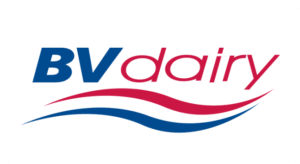

Location: Blackmore Vale and Shaftesbury, Dorset, United Kingdom
Industry: Dairy and Food Processing and Manufacturing
Website: www.bvdairy.co.uk
Founded in 1958 as a family farm in England’s West Country, BV Dairy is now a thriving modern business. Each year, the company purchases 35 million liters of milk from dairy farms within a 25-mile radius of their production facility in Shaftesbury, Dorset and turns them into dairy products for food distribution and manufacturing firms. BV Dairy’s range includes their award-winning Dorset clotted cream, as well as yogurts, buttermilk, soft cheese, and mascarpone.
Try as you might, you won’t find a city sidewalk in Thornbury Township, Pennsylvania. You won’t even find a traffic light. What you will find, though, is a town staff with foresight that is managing some rather dramatic 21st century growth with the help of DocStar ECM.
Thornbury Township, a rural community of about 6,000 residents, is located at the southernmost end of Delaware County, a 40-minute drive from Philadelphia and a stones throw from the state of Delaware. The town is governed by a three-person elected Board of Supervisors. It’s managed by a rather small staff – a half-dozen or so in the office and a similar number outside handling sewer, streets and other public works functions.
Rural towns of 6,000 sometimes are thought of as sleepy. Not Thornbury Township. The town includes people who’ve been there all their lives – grandparents and great-grandparents – of course. But it also has its share of newcomers – professionals, executives, doctors, engineers, and so on, who value the space but enjoy the proximity to larger communities.
Deborah Perry, assistant manager – and secretary and treasurer, says the Board of Supervisors – a fairly progressive group – was quite receptive to the idea of digital imaging and storage. “We didn’t have a hard time convincing them, she says. “Our board is very much into things being state-of-the-art. They like things to be up and coming, easy, and cost-effective.”
According to Perry, DocStar has become part and parcel of the township’s fabric. “We use DocStar ECM for just about everything,” Perry says. The township has DocStar ECM tied in to its GIS system – another example of how the Board of Supervisors values the benefits of technology. Perry and the rest of the staff are in the process of scanning and linking all building, planning and zoning paperwork in so that records link up with the properties they affect.
Many organizations tap DocStar as part of a strategy to bring paperwork under control and, once implemented, take opportunities to reduce staff and related personnel costs. In Thornbury Township, the process got a bit convoluted. While the township was in the midst of implementing DocStar – scanning and filing documents -the Uniform Construction Code (UCC) was implemented in Pennsylvania, and competition for experienced building inspectors and support staff intensified.
“We used to have a big staff,” Perry says. “But when the UCC was implemented, we lost a lot of people.” Those people wound up in larger communities with bigger budgets. That slowed the pace of scanning a bit, but it has not dampened Perry’s enthusiasm or detracted from the benefits the township has received from DocStar implementation.
“DocStar gives us the power to add and retrieve more documents to and from the system. It increases our accuracy, efficiency, and traceability. Furthermore, this solution has plenty of flexibility that lets us tune and tweak workflows as our business processes change and grow. Most of all, the introduction of DocStar has allowed us to streamline processes and save time—notably in terms of invoice approval and delivery note processing—because it brings all of the relevant information and documentation together in one place.”
-Mark Damen, ERP Systems Manager | BV Dairy
“We have probably about a third of our properties scanned into the system right now,” Perry says. “With the third that are in there, you can find out anything you want about that property,” something she describes as ‘fantastic.’ The ‘anything you want’ includes everything from old permits of any kind — building, electrical, plumbing – to subdivision approvals, zoning decisions, code enforcement actions and the like. “Anything you ever wanted to know about a property is in there,” she says.
When it came time to get documents scanned, the township brought in hired guns. The local DocStar partner operates a separate branch that converts paper documents to electronic images. That unit helped Thornbury Township get older documents into the system. “They did a lot of the back filing for us,” Perry says. That provided the foundation for staff to build on. “All of the current work, we are doing,” she says.
For building permits and plans, the process happens once the permit goes out. “We wait until everything is approved, so we have a packet,” Perry says. “Once you have a building permit, for instance, and it is completely approved, and the person has come paid for it and picked it up, then you have a packet and it’s time to scan it.”
But scanning goes well beyond permits and property-specific documents. “We also have scanned the minutes from all of our Board of Supervisor meetings,” Perry says. “That’s a wonderful thing.” That’s because, if Murphy’s law ever comes into play in municipalities, it’s in the area of minutes retrieval. Whatever obscure discussion took place – probably years ago – always seems to be the topic someone wants to find information on, and quickly. “The document you’re looking for is always hard to find,” Perry says. “It’s usually something you talk about once every five years, something like gun control.”
“We scan our minutes then OCR them,” she adds, referring to the technology that converts images into text in a document, which can be searched. “Every single word is done,” Perry says, “so you can bring up anything you need.”
For Perry and the rest of the small office staff in Thornbury Township -her, the town manager, an administrator in code enforcement and in public works, and two part-time secretaries taking care of planning and zoning meetings – having access to digital records through DocStar is a huge time saver. “Where before you would be rooting through drawers forever, now you can just enter a key word and find a document.”
Staff saves time when it comes to plans, as well. As a suburb of both Philadelphia and Wilmington, DE, the township has experienced dramatic development. “When I came here 12 years or so ago, there were 3,000 residents,” Perry says. Now it’s 6,000, and more are on the way. “We have about five huge developments that have come in with over 100 houses.” These development applications bring with them plans, plans and more plans. That doesn’t phase Perry one bit.
“Our plans are all in DocStar, too,” she says, with a sense of relief. “We’re one of the few towns around that has the large-format scanner. We’ve had it several years, and we’ve been putting our plats and plans into the system on a consistent basis. Doing so saved Perry and the township many sleepless nights, and a sizeable amount of storage. “Large subdivision plans are some of the scariest things to lose,” Perry says. “Plus, they take up an awful lot of space.”
Benefits go beyond saving time and space. “It’s saved us from hiring people,” Perry says. One staff person oversees the scanning, a move driven largely by the need for consistency. “It’s hard when you have too many hands in the pot,” Perry says. “If you don’t have consistency, it takes longer to access documents.” Perry’s referring to the document naming and the process of attaching documents to the GIS system.
By reducing document storage, the township saved even more money. “There is so much volume we couldn’t keep it in house,” she says. “Without DocStar, we would have to rent space off-site.” That would not only cost money to lease space or contract with an archive company, the township would have to pay staff to go locate documents, bring them back to the township building, then return them when done. “We save all those expenses by just getting everything in the system,” Perry says.
Part of what makes DocStar ECM such a benefit to Thornbury Township is the service that goes along with the product – service driven by local DocStar partner ImageNet. “Their service is wonderful,” Perry says. “If you have a problem at 10 o’clock, they’re out here by noon.” When problems occur, they generally involve the scanners. “Scanners are pieces of equipment, and sometimes you get a blockage in there,” Perry says. ImageNet technicians are at the ready for situations like that, and can generally resolve issues quickly.
Perry also values ongoing service and training the DocStar partner provides. As part of the annual service contract, ImageNet is, for the most part, at Thornbury Township’s beck and call. “If we call, if we need anything, they come out,” Perry says. “For instance, we just hired a new person in code enforcement. She hasn’t been trained on DocStar. We’ll just call ImageNet’s support line, and they’ll train her at no additional cost.”
Training is important if for no other reason than to ensure consistency. “You have to make sure everyone is on the same page,” Perry says. “Anybody who is scanning needs to do it to in a specific way, so, down the road, everyone will be able to retrieve items.”
“There are other things here and there – things we don’t do every day – that we’d rather have them do,” she says. These include downloading, maintenance, and even archiving. “They come out and clean it a couple of times a year,” Perry adds. She says it makes her feel much more comfortable knowing a DocStar partner is available to handle these routine items.
Perry notes that she has already recommended DocStar ECM and ImageNet to many state and local government offices, and that she’ll continue to do so.
© Epicor Software Corporation 2025 | Terms of Use | Privacy Policy | Cookie Policy |